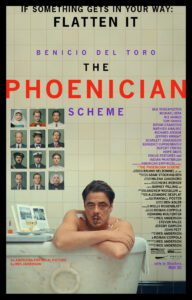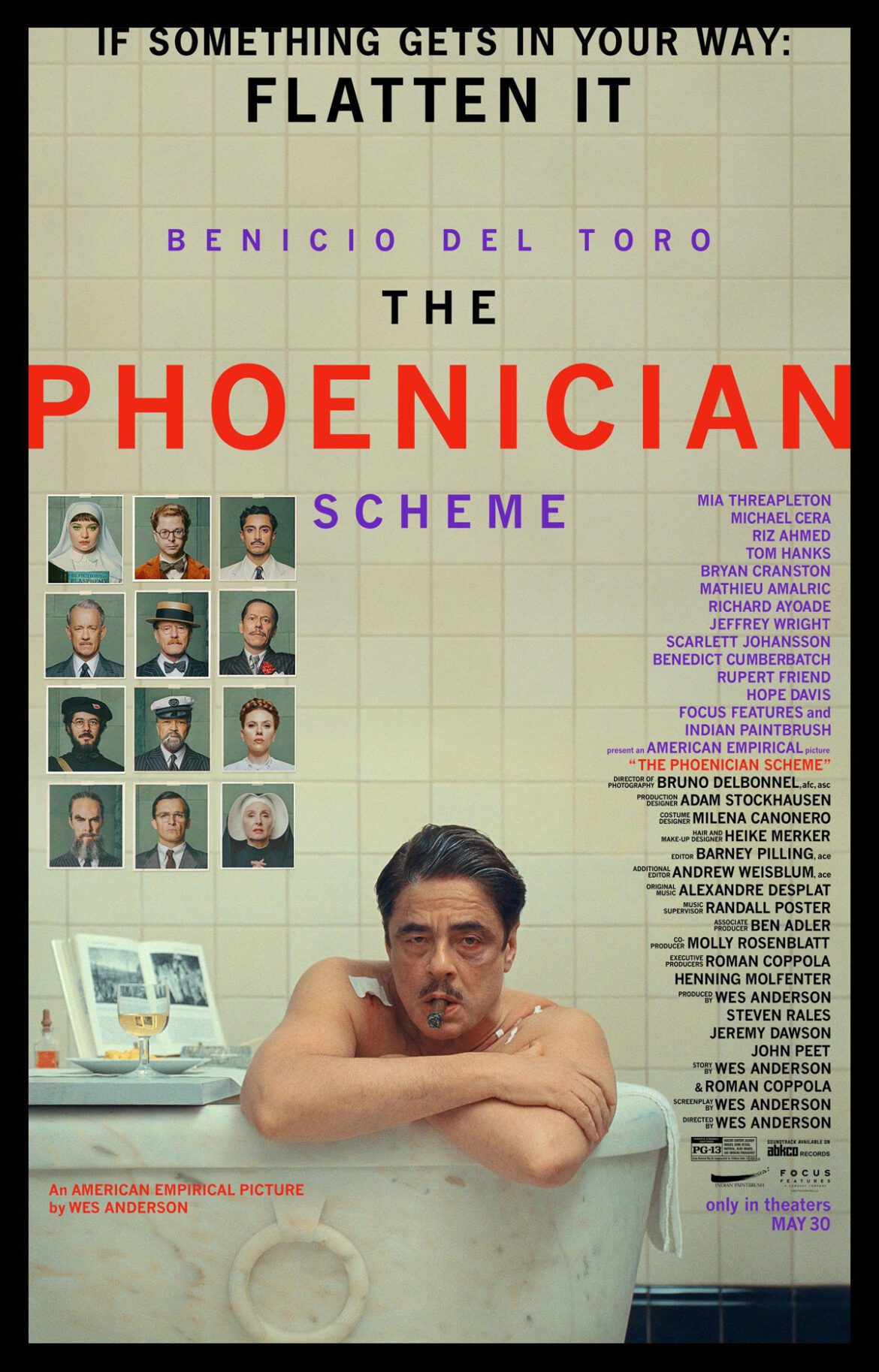
Director: Wes Anderson
Release Year: 2025
Runtime: 1h 41m
There’s never been any doubt that Wes Anderson is a good filmmaker. His style and aesthetic are instantly recognizable. And, with each subsequent movie, his creative vision only tightens. And tightens. And tightens. Until there is literally no looseness left. No air. No anything other than a doll’s house of sketches and compartmentalized himness. His student film look and feel of first movie, Bottle Rocket, is so far in the rear view mirror that it might as well be at the bottom of the ocean. Even some of the heartwarming and life-filled scenes like Gene Hackman running around with his track-suited grandsons to “Me and Julio Down by the School Yard” in my favorite Anderson movie, The Royal Tenenbaums, are gone. Everything is controlled and planned and stilted. It’s an impressive feat, this level of precision. But is it fun? Amusing, maybe. Funny, sometimes. Entertaining, mostly. But not life affirming. Or fun.
It’s clear that Anderson knows all this. But, frankly, he doesn’t care. He leans in more than he ever has and drops something incredibly meta into the middle of his own movie. The shoeboxes. The literal Phoenician Scheme in The Phoenician Scheme, such as it is, is laid out in a series of variable sized shoe boxes placed in an intricate pattern by our main character, Zara-zsa Corda (Benicio Del Toro). Each shoebox contains the plans for the next phase of the scheme. Anderson uses the boxes as a plot device to essentially divide the movie into sections, but the shoeboxes also represent his diorama directing style. Each scene a perfectly crafted and perfectly set-dressed diorama — and everyone knows that dioramas are made in… shoeboxes. Funny! Funny? Ok, maybe it’s just me.
If you’ve seen an Anderson movie — especially his most recent, Asteroid City, you’ll be familiar with the increasing stiffness and almost robot-like or marionette movements he asks of his actors. It’s hard to explain, but they all seem to have this kind of choreography in their movements (or stillness) that is an almost freaky uncanny valley thing. Nobody moves like a real human being with loose-limbed casualness. This is most evident in the bizarro H-O-R-S-E basketball scene with Tom Hanks, Bryan Cranston and Riz Ahmed. Cranston is an especially gifted physical actor and his reverse layup shot and his back-to-the-basket prayer shot still stick in my head in a really weird way. I could watch it 50 times and not figure out how Anderson and he made him seem more like a weird 1940s wind-up toy than a man in a Stanford ringer-t. Which is somehow less weird than Hanks in a Pepperdine crewneck sweatshirt. Pepperdine? Weird.
Notice how most the talk so far is about how the film an actors looked rather than the film itself? Well, that is kind of the Anderson curse. There is so much to look at and so much to marvel at in his filmmaking that the plot and heart of the films can get lost. A film about a selfish criminal in Corda whose guilt and regret overwhelms his greed and ambition should be a nice story. An arc that is old as time, sure, but redemption and reconciliation is always good. Though, at the end of the day, I kind of shrugged at the whole “plot.” Honestly I was mostly too busy watching Michael Cera be an absolutely ridiculous — and awesome — human being. I can’t even make up how freaking funny and impossible to ignore he is in this film. He uses an absurd accent for the first portion of the movie that is just so confusing, confounding and hysterical I wasn’t sure how to not gawk like a dummy. His look, everything. And then he switches character at some point and is equally insane and amazing. I’ve loved this guy in everything he’s been in. Arrested Development, Superbad and god love him in Scott Pilgrim. It’s also good to see two very famous mumblers, Del Toro and Riz Ahmed, annunciate for a change and do a good job with their characters. Mia Threapleton (who I had no idea is Kate Winslet’s daughter) holds her own in a stacked cast as Del Toro’s stoic, but quirky, nun-to-be daughter. She doesn’t get to do a ton of highs or lows, but she does have that twinkle in her scenes filled with wacky men.
Yes, I would like a little more warmth in my cinema. A puppet show in a diorama isn’t the most compelling sell. But if you imagine it more as an avant-garde stage play, it feels a bit better going down. Especially if the performances are as solid and interesting in parts as they are. I can feel myself talking my brain into liking the film better than I did while watching it. While in motion, it felt a bit all over the place. Oddly slapstick-y in parts and stylized to within an inch of sterility in others. If there wasn’t so much to look at, I feel like I would have tipped over into boredom. But, as I think about it more, I pull myself back from the edge and remember the artistry. I do wish there was a little more focus on making the narrative more cohesive and dynamic in some way, but perhaps my sleepiness shouldn’t be factored into my feelings about an obvious big swing.


